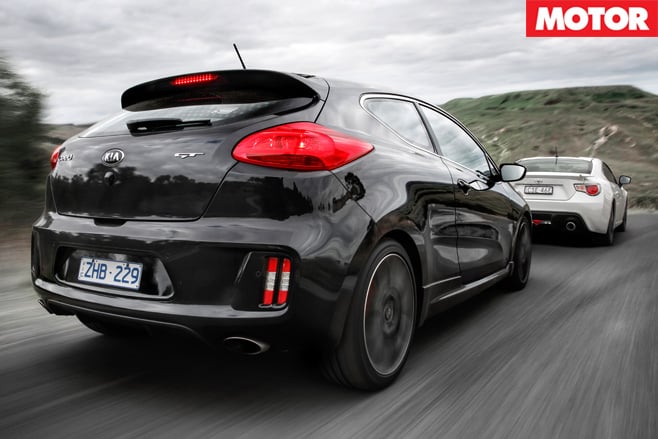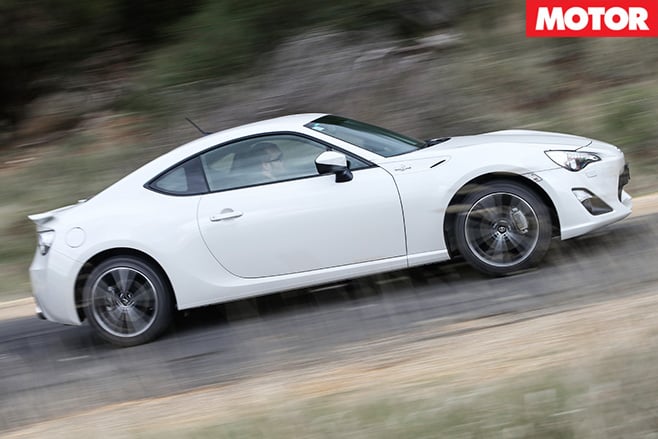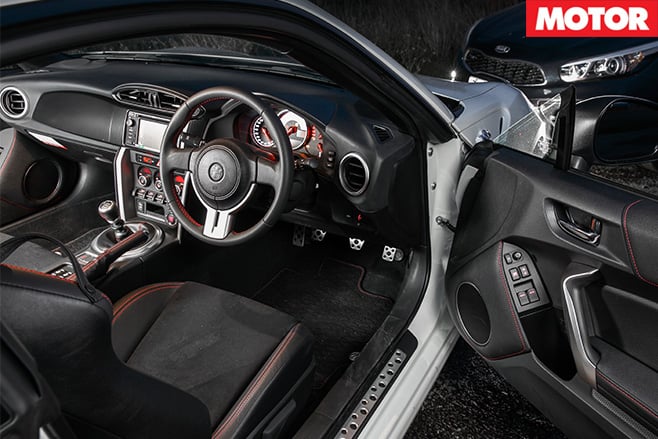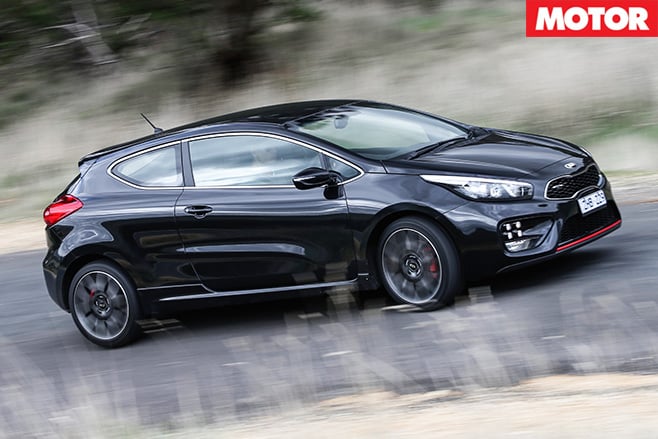It’s a familiar tale to anyone brought up on a diet of clichéd martial arts movies.
This story was originally published in our July 2014 issue
The young upstart, full of hope and dreaming of a better life, bursts onto the scene, vanquishing all before him (it’s always a ‘him’) until the final showdown with the Grand Master, at which point there’s usually either a humbling defeat or an against-all-odds victory.
The ProCeed GT’s impressive showing against its obvious rivals made it clear we needed to cast further afield for some true competition. And while another boosted hot hatch, such as Renault’s new Sport Clio, might have made a little more sense, we could think of no tougher test than the sensei of the affordable performance car scene, the Toyota 86.

In contrast, the Kia’s driving position, which felt so low-slung and sporty in the context of its hatch rivals, suddenly feels a bit high and remote. The sensation fades after only a short time at the helm, but it’s a stark reminder the ProCeed has moved up a division.
Thanks to a twin-scroll turbo feeding air into the direct-injected 1.6-litre four, Korea’s new hero should at least have no trouble matching its Japanese foe in a straight line. Max torque of 265Nm is generated from just 1750rpm, so with peak power of 150kW arriving at 6000rpm, the ProCeed effectively has a 5000rpm powerband to play with.

Having clocked 7.45sec to 100km/h and 15.34sec for the quarter mile in the five-hatch comparison, it should come as no surprise the Kia manages 7.47sec and 15.37sec this time around. It sure surprises us, though, thanks to heavy rain at the test track.
Despite the slippery conditions, it shoots off the line and actually records a higher terminal speed (149.36km/h) than in the dry (148.26km/h). Why? No idea, but with another 1500km on the clock since the last test, it’s possible the engine has freed up a bit.

We’ve seen 6.9sec and 14.9sec from the Toybaru twins before, but the best it can muster today is 7.91sec to 0-100km/h and a 15.65sec 0-400m at 147.80km/h. And don’t point your finger at the wet surface. The 86 launches just fine, leading the Kia to 30km/h, but after that it just runs out of puff.
What’s more disappointing than the Toyota’s numbers is the way it delivers them. The 2.0-litre boxer has a strangely lumpy power curve, with an early burp of torque, then a hollow, lifeless mid-range before picking up again above 5000rpm. Its lack of punch is most obvious in its 80-120km/h times, the Kia’s 0.8sec advantage in third gear (4.6 vs 5.4sec) stretching to a substantial 4.1sec (9.0 vs 13.1sec) in sixth.

The 86 sounds okay, too, though when the tacho needle is kissing 7400rpm, it’s hardly the noise you’d get from something perhaps VTEC.
Of course, straight-line performance was last on Toyota’s list of priorities when developing the 86. As soon as the road begins to sweep and swoop, the rear-drive sportster comes alive. The electrically-assisted steering is perfect in its weight and response, feeding a clear stream of information to your fingertips about exactly how much grip is left in the front tyres.

But can it actually be disabled? The presence of a yellow flashing light even with the systems off suggests not, but following further, highly scientific investigation at the test track – driving it on the lock stops – it appears ESP will subtly interrupt as soon as the car starts to slide, but drive through it and the electronics will leave you alone. Seems the wrong way around, but there you go.


It is faster though, gaining ground not just on the straights but also under brakes and in the corners, too. It’s more planted, skipping around less than the Toyota on bumpy roads, and thanks to those grippy Michelin Pilot Sport 3s, the Kia digs into the surface yet still shuffles around enough to make you feel like you’re making a difference.

However, when it comes to the crunch, what costs the Kia most is while the 86 gets better the harder you drive it, the ProCeed starts to get scrappy. At its limit the front begins to wash wide as the inside front tyre struggles for traction.

What’s even more amazing is we’re comparing a $30K Kia with a $35K Toyota and would be happy to drive away in either.
Supercars… who needs ’em?
Kia ProCeed GT
Engine: 1591cc inline-4, DOHC, 16v, turbocharger Power: 150kW @ 6000rpm Torque: 265Nm @ 1750-4500rpm Weight: 1373kg 0-100km/h: 7.47sec (tested*) 0-400m: 15.37sec @ 149.36km/h (tested*) 100km/h-0: 37.7m (tested*) Price: $30,585 (as tested)
4 out of 5 stars
Toyota 86 GTS
Engine: 1998cc flat-4, DOHC, 16v Power: 147kW @ 7000rpm Torque: 205Nm @ 6400rpm Weight: 1275kg 0-100km/h: 7.91sec (tested*) 0-400m: 15.65sec @ 147.80km/h (tested*) 100km/h-0: 37.9m (tested*) Price: $35,990
4.5 out of 5 stars






